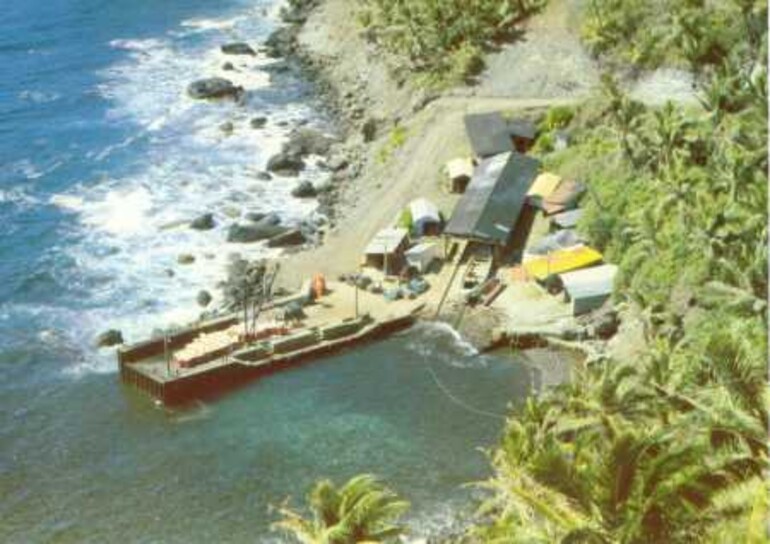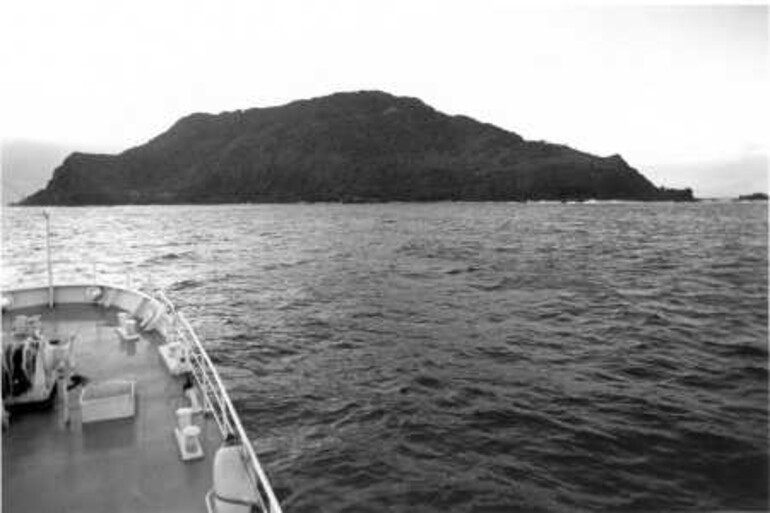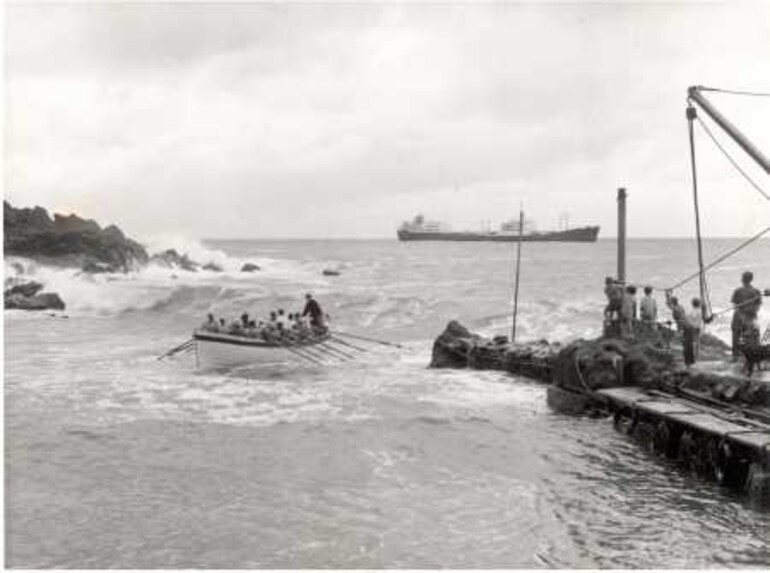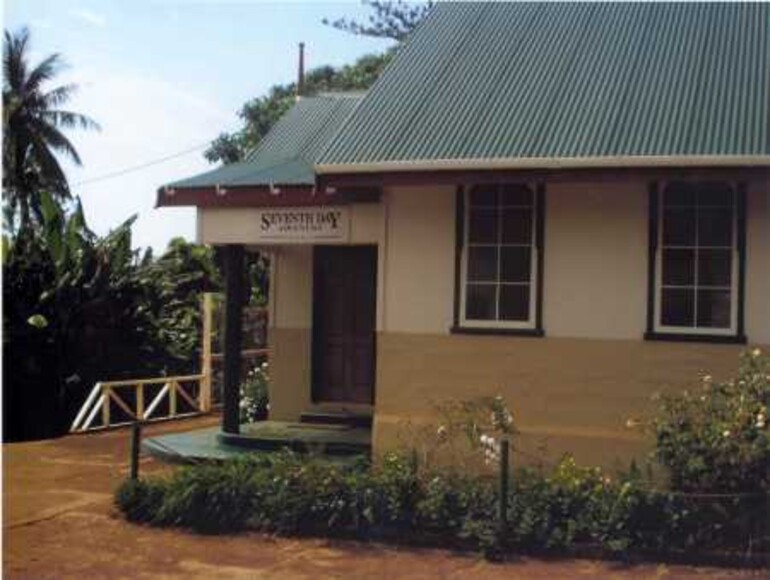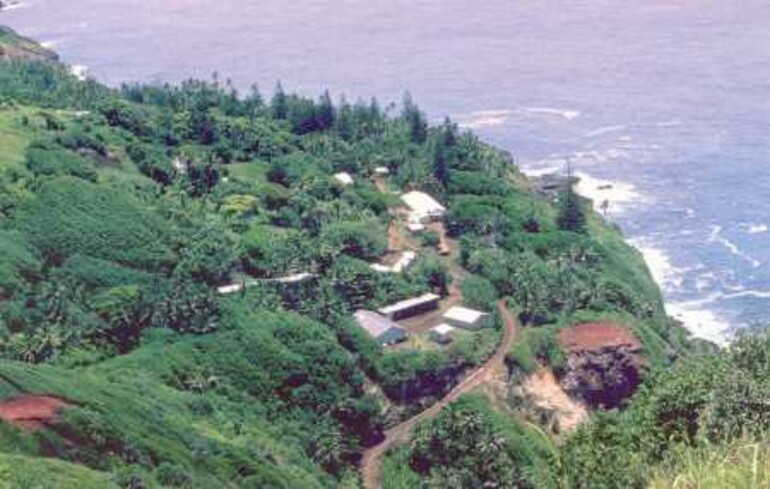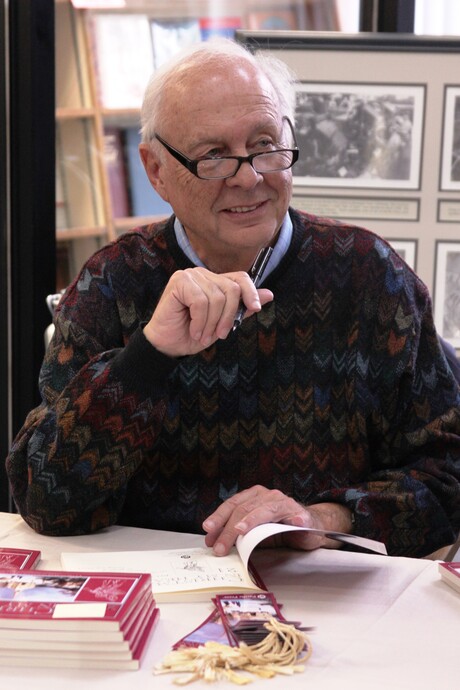New Road on Pitcairn Island Completed GLEANER Readers Helped Pitcairn Islanders in the South Pacific Ocean are now enjoying a smooth ride on a new road, made possible in part by donations from GLEANER readers in the mid- to late-90s. One of the world’s most remote islands, Pitcairn was the pioneer base in the late 19th and early 20th centuries for the sending of Seventh-day Adventist missionaries to scores of other islands in the Pacific Ocean. The island is 1 mile wide by 2 miles long and is a rugged, volcanic outcropping located some 5,000 miles almost straight south of California. “The new road up Pitcairn’s steep ‘Hill of Difficulty,’ leading from the island’s boat landing at Bounty Bay up to the little village of Adamstown, has finally been completed,” said Herbert Ford, Pitcairn Islands Study Center director, located at Pacific Union College. The center headed the international fundraising drive to replace Pitcairn’s former slide-prone, often-muddy, mostly-dusty road. Thousands of people from the North Pacific Union and throughout the world gave funds to complete the new, concrete road. Hundreds of Adventist school children gave funds through their schools, and a number of world notables, including the late King Hussein of Jordan, gave funds to the project. Governmental bureaucratic red-tape delayed the start of construction for years, but work finally began in mid-2005 and was completed in mid-2006. Pitcairn is a British “overseas territory.” Most of those now living on Pitcairn Island are direct descendants or otherwise related to the British sailors who in 1789 revolted against their captain, William Bligh, during the famous “Mutiny on the Bounty” near the Tongan Islands. From a population peak of some 230 inhabitants in the 1930s, Pitcairn’s population has dwindled because of emigration to about 50 people today. Likewise, the Seventh-day Adventist population has decreased. In the early days, nearly 100 percent of its inhabitants were Seventh-day Adventists, but today there are less than a dozen Adventists. However, there is still an Adventist pastor who ministers on the island, and more than half of the population often attend Sabbath services. The Pitcairn Islands Study Center houses the world’s largest collection of information and artifacts about various elements of “The Bounty Saga,” a sea story whose universal appeal never ceases. The center’s purpose is to provide accurate information about the saga, including the role of Seventh-day Adventism, and to provide direct help to the Pitcairn people whenever possible. “The center provides a wonderful springboard for explaining Adventist beliefs to others,” says Ford. “One doesn’t talk long about Pitcairn Island until he’s talking about the place of the Adventist faith in the island’s history.” Educators, journalists, scholars, researchers, writers, students, government officials and others come to the center from numerous countries to make use of the many, often rare books and papers that it houses. Scores of thousands have made use of pitcairnstudycenter.org, the center’s extensive Internet Web site, to learn about Pitcairn’s interesting history and the mutiny story. Adventists who may have information, books or artifacts relating to Pitcairn or the Bounty story are encouraged to consider placing originals or copies at the study center for use by others. Ford is available at hford@puc.edu. The study center’s address is 1 Angwin Ave., Angwin, CA 94508.
New Road on Pitcairn Island Completed
GLEANER Readers Helped
Pitcairn Islanders in the South Pacific Ocean are now enjoying a smooth ride on a new road, made possible in part by donations from GLEANER readers in the mid- to late-90s.
One of the world’s most remote islands, Pitcairn was the pioneer base in the late 19th and early 20th centuries for the sending of Seventh-day Adventist missionaries to scores of other islands in the Pacific Ocean. The island is 1 mile wide by 2 miles long and is a rugged, volcanic outcropping located some 5,000 miles almost straight south of California.
“The new road up Pitcairn’s steep ‘Hill of Difficulty,’ leading from the island’s boat landing at Bounty Bay up to the little village of Adamstown, has finally been completed,” said Herbert Ford, Pitcairn Islands Study Center director, located at Pacific Union College. The center headed the international fundraising drive to replace Pitcairn’s former slide-prone, often-muddy, mostly-dusty road.
Thousands of people from the North Pacific Union and throughout the world gave funds to complete the new, concrete road. Hundreds of Adventist school children gave funds through their schools, and a number of world notables, including the late King Hussein of Jordan, gave funds to the project.
Governmental bureaucratic red-tape delayed the start of construction for years, but work finally began in mid-2005 and was completed in mid-2006.
Pitcairn is a British “overseas territory.” Most of those now living on Pitcairn Island are direct descendants or otherwise related to the British sailors who in 1789 revolted against their captain, William Bligh, during the famous “Mutiny on the Bounty” near the Tongan Islands.
From a population peak of some 230 inhabitants in the 1930s, Pitcairn’s population has dwindled because of emigration to about 50 people today. Likewise, the Seventh-day Adventist population has decreased. In the early days, nearly 100 percent of its inhabitants were Seventh-day Adventists, but today there are less than a dozen Adventists. However, there is still an Adventist pastor who ministers on the island, and more than half of the population often attend Sabbath services.
The Pitcairn Islands Study Center houses the world’s largest collection of information and artifacts about various elements of “The Bounty Saga,” a sea story whose universal appeal never ceases. The center’s purpose is to provide accurate information about the saga, including the role of Seventh-day Adventism, and to provide direct help to the Pitcairn people whenever possible.
“The center provides a wonderful springboard for explaining Adventist beliefs to others,” says Ford. “One doesn’t talk long about Pitcairn Island until he’s talking about the place of the Adventist faith in the island’s history.” Educators, journalists, scholars, researchers, writers, students, government officials and others come to the center from numerous countries to make use of the many, often rare books and papers that it houses.
Scores of thousands have made use of pitcairnstudycenter.org, the center’s extensive Internet Web site, to learn about Pitcairn’s interesting history and the mutiny story.
Adventists who may have information, books or artifacts relating to Pitcairn or the Bounty story are encouraged to consider placing originals or copies at the study center for use by others. Ford is available at hford@puc.edu. The study center’s address is 1 Angwin Ave., Angwin, CA 94508.





